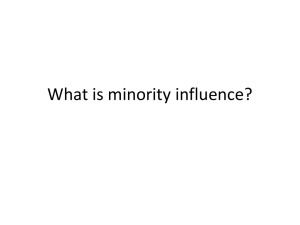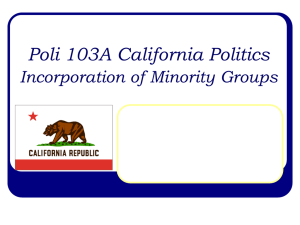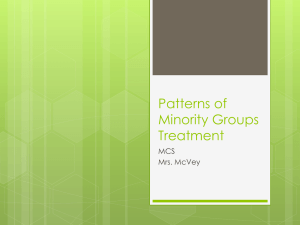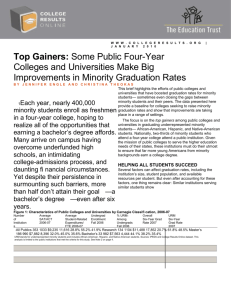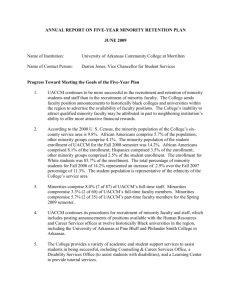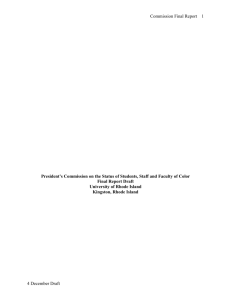Academic Support Programs
advertisement
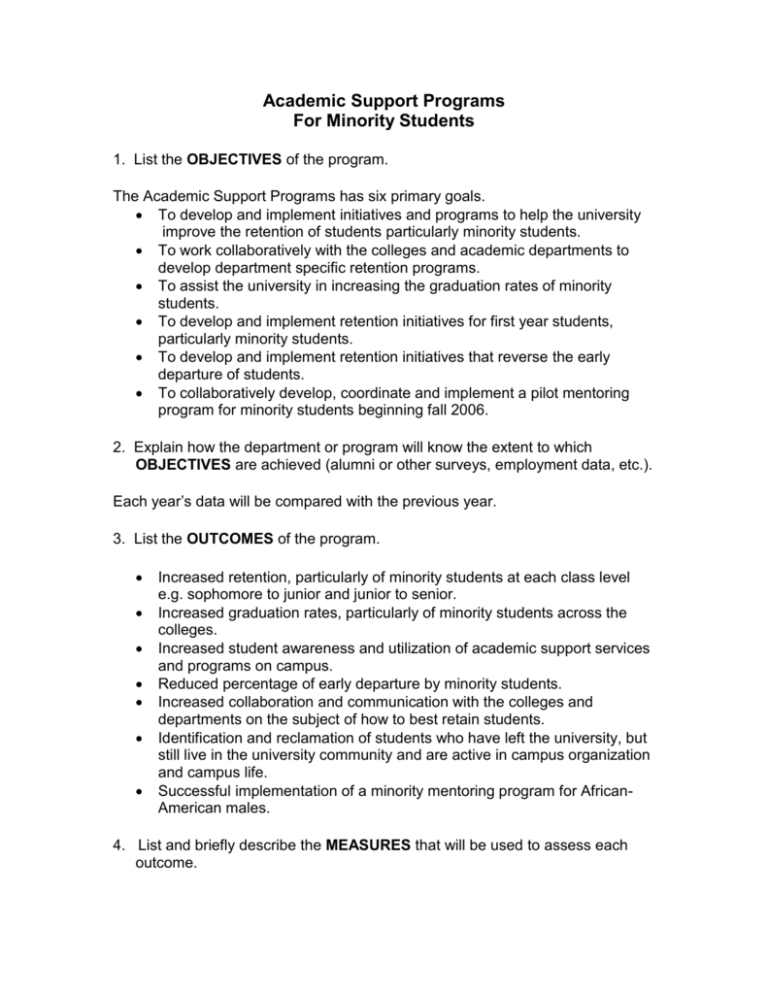
Academic Support Programs For Minority Students 1. List the OBJECTIVES of the program. The Academic Support Programs has six primary goals. To develop and implement initiatives and programs to help the university improve the retention of students particularly minority students. To work collaboratively with the colleges and academic departments to develop department specific retention programs. To assist the university in increasing the graduation rates of minority students. To develop and implement retention initiatives for first year students, particularly minority students. To develop and implement retention initiatives that reverse the early departure of students. To collaboratively develop, coordinate and implement a pilot mentoring program for minority students beginning fall 2006. 2. Explain how the department or program will know the extent to which OBJECTIVES are achieved (alumni or other surveys, employment data, etc.). Each year’s data will be compared with the previous year. 3. List the OUTCOMES of the program. Increased retention, particularly of minority students at each class level e.g. sophomore to junior and junior to senior. Increased graduation rates, particularly of minority students across the colleges. Increased student awareness and utilization of academic support services and programs on campus. Reduced percentage of early departure by minority students. Increased collaboration and communication with the colleges and departments on the subject of how to best retain students. Identification and reclamation of students who have left the university, but still live in the university community and are active in campus organization and campus life. Successful implementation of a minority mentoring program for AfricanAmerican males. 4. List and briefly describe the MEASURES that will be used to assess each outcome. Direct Measure: Institutional data Indirect Measure: Student Surveys 1. Institutional data showing the number and percentage of minority students enrolled after the first, second, third and fourth year. 2. Institutional data showing the number and percentage of minority of students who graduated in four, five and six years. 3. Surveys administered to measure minority students. 4. Institutional data reporting fall-fall retention for new, full-time, direct from high school students will be used to measure the increase in student retention 6. 5. Institutional data reporting and comparing the number and percentage of minority students who stopped or dropped out each quarter during the academic year. 5. Describe how outcomes are made MEASURABLE and BENCHMARKS or other determinants of success are set. The following criteria will be used for assessing the extent to which the outcomes are achieved: A first year direct from high school full-time student retention rate for minority students of 70 % or above An increase in the number and percentage of minority students who return to pursue their degrees after having stopped out or dropped out of the university. An achieved minority student graduation rate of 30 % or more after four years. An achieved minority student graduation rate of 40% or more after five years. An achieved minority student graduation rate of 50% or more after six years. 6. Describe the process by which FINDINGS will be derived from the measures. Data will be collected and summarized by the Director of Academic Support Programs for Minority Students and reported to the Vice President for Curriculum and Instruction and Dean of University. Additionally the data will be shared with the advisory board that will be established to make recommendations to Academic Support Programs. 7. Describe the process by which findings are analyzed to determine what IMPROVEMENTS should be made to better meet objectives and learning outcomes. Information and data gathered from all programs and initiatives will be reviewed by the Academic Support Services Advisory committee which will recommend modifications to the program. Evaluations and surveys from programs will be used by the Director to assess changes to improve the program and services. The Director will share these recommendations with the Vice President for Curriculum and Instruction and Dean of University College. 8. Identify a TIMETABLE for assessment. All outcomes will be assessed annually. 9. Briefly explain how the program’s assessment plan supports and interacts with ACCREDITATION and LICENSURE requirements (if applicable). N/A 10. Describe how the objectives and outcomes of the program are COMMUNICATED to students and others. Objectives and outcomes are communicated on the university website.

